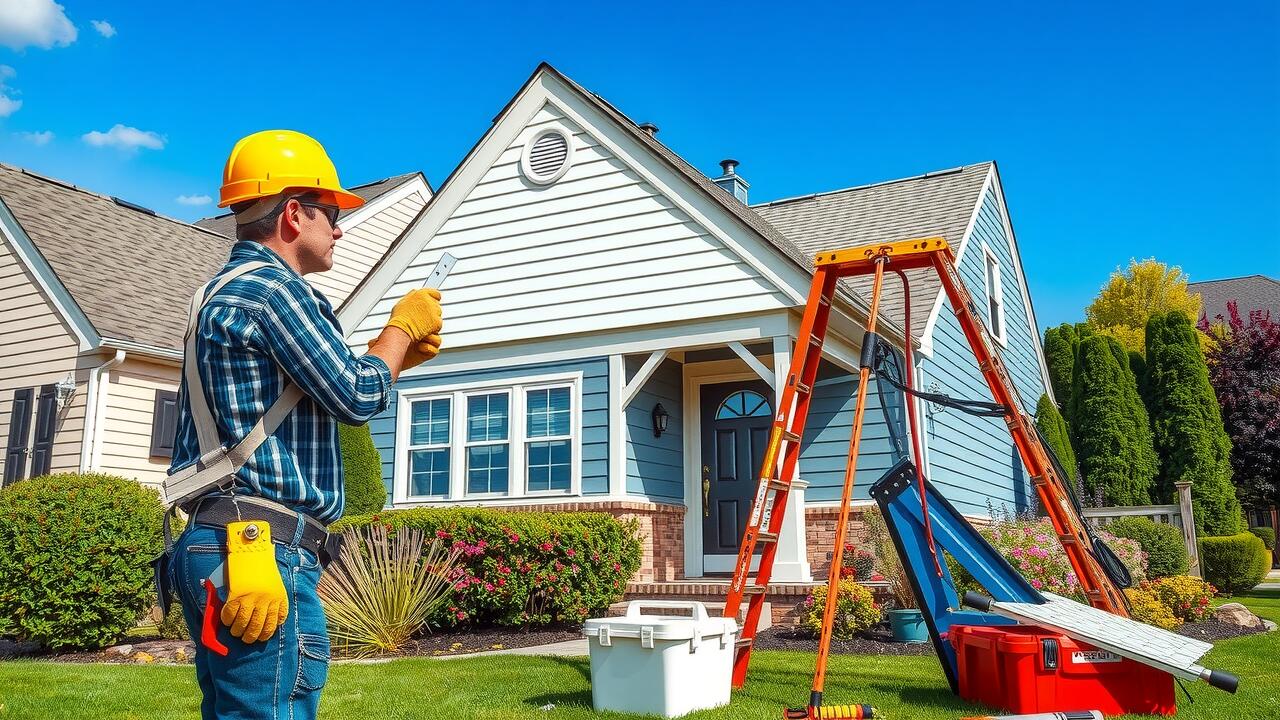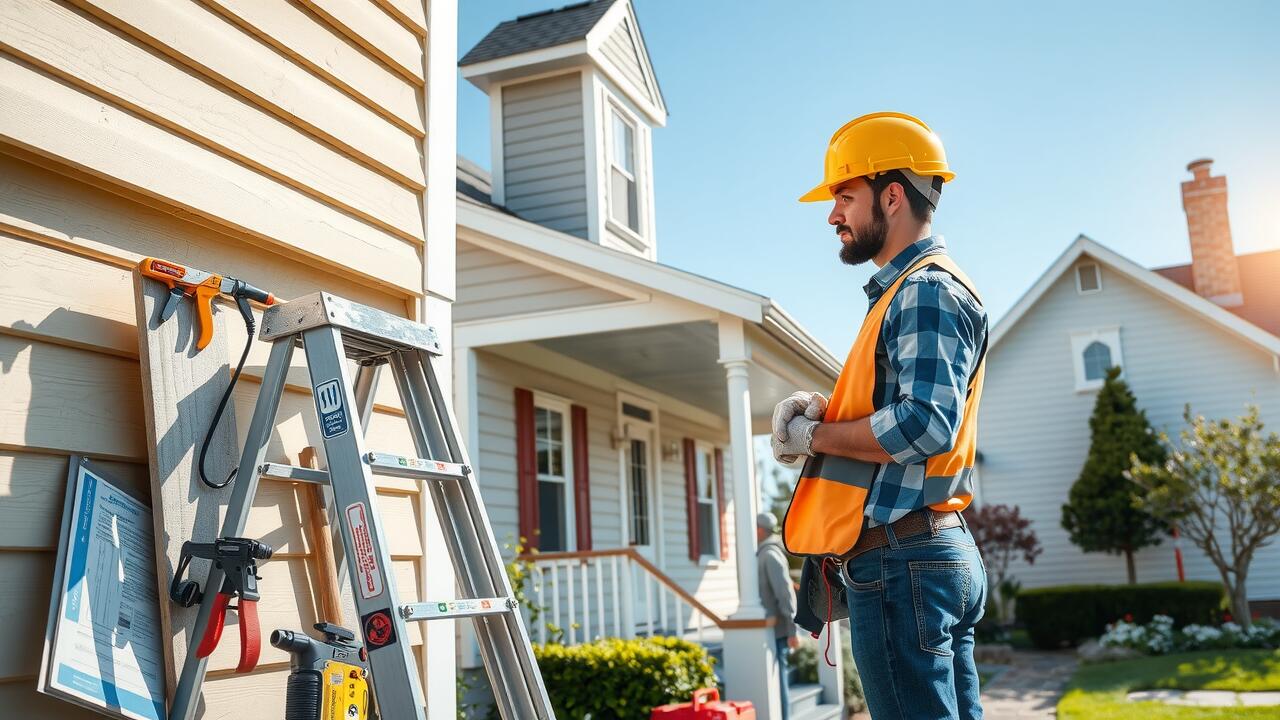
Table Of Contents
Sealing the Repair
After repairing any damaged siding, sealing the area properly is crucial for longevity and protection against the elements. This process involves applying a quality sealant to the edges and joints to prevent water infiltration. The sealant helps to create a barrier that keeps moisture out, which can lead to further damage if left untreated. For residents considering maintenance, options like "siding repair in Schaeferville, Rapid City" often incorporate this important step to ensure the integrity of the repair.
Selecting the appropriate sealant is essential. Different materials require different types of sealants for optimal performance. Acrylic, silicone, and polyurethane sealants offer various benefits depending on the siding’s material and exposure to weather conditions. Make sure to check the manufacturer's recommendations or consult with a professional for the best choice that suits the specific needs of your siding repair.
Choosing the Right Sealant
Selecting the correct sealant for siding repair is crucial for ensuring longevity and durability. Different materials require specific types of sealants to achieve the best adhesion and waterproofing. For wooden siding, look for a sealant that is designed to expand and contract with the wood to prevent cracking. For vinyl or aluminum siding, a silicone-based sealant often performs well because it retains flexibility over time, ensuring a tight seal against the elements.
When conducting siding repair in Schaeferville, Rapid City, consider factors such as temperature and humidity levels. These environmental conditions can impact the effectiveness of the sealant. Additionally, choose a sealant with a color that closely matches the surrounding siding to maintain aesthetic appeal. The right sealant not only protects your home but also enhances its overall appearance.
Painting and Finishing
Matching colors and finishes is a crucial step in the painting and finishing process. After completing the repairs, it’s important to ensure that the newly painted areas blend seamlessly with the existing siding. This might involve obtaining paint samples and testing them against the current siding. Local stores often provide resources to help find the right shade and finish. In regions like Schaeferville, Rapid City, the weather can impact the choice of paint, making it essential to select a product that withstands local conditions.
Applying the chosen paint requires attention to detail for a professional look. Proper surface preparation can have a significant impact on the final result. This can include cleaning the area thoroughly and using primer if necessary. Multiple coats may be needed to achieve the desired depth of color, especially when working with lighter shades over dark siding or vice versa. Ensuring the paint is evenly applied enhances durability, which is vital for siding repair in Schaeferville, Rapid City, where weather exposure can be demanding.
Matching Colors and Finishes
Choosing the right colors and finishes for your repaired siding is crucial to achieving a seamless look. When selecting paint or stains, consider the original hue and the surrounding exterior elements. Take a sample of the original siding to a local hardware store for color matching. Many stores can help create a blend that closely resembles the existing color, ensuring your repair is less noticeable.
Siding repair in Schaeferville, Rapid City, may also benefit from an examination of the local architecture and design trends. Pay attention to nearby homes and their finishes. This insight can guide you in selecting the most appropriate shade and texture. Properly matching the finish, whether matte or gloss, will further enhance the uniformity of your project's outcome.
Conducting Final Inspections
After completing the repair work on damaged siding, conducting thorough final inspections is essential to ensure everything meets quality standards. This process involves examining the repairs for any visible flaws or imperfections. Pay attention to seams, joints, and edges that may require touch-ups or further adjustments. Properly assessing these areas helps identify any issues before they become more significant problems.
For those involved in siding repair in Schaeferville, Rapid City, a final inspection also includes evaluating the overall aesthetics and functionality of the siding. Checking for correct alignment and ensuring the sealants have properly cured are vital steps. It's essential to confirm that the siding not only looks good but also provides the necessary protection against the elements. Taking the time to perform these inspections contributes to the durability and longevity of the repair.
Ensuring Quality and Completeness
After completing the repairs, a thorough inspection is essential to ensure everything is up to standard. Look for any visible gaps or misalignments in the siding that may have been overlooked. Check that the sealant has cured properly and that there are no inconsistencies in its application. This step guarantees that your efforts will yield the desired protection and aesthetic for your home.
Siding repair in Schaeferville, Rapid City, benefits from a careful review of the finished work. Make sure to check the paint coverage and confirm that it matches the surrounding areas seamlessly. Observing the entire facade from different angles can reveal imperfections that might not be noticeable from a single vantage point. Taking the time for these final inspections ensures a durable and visually appealing result.
FAQS
What are the common types of siding damage that can be repaired?
Common types of siding damage include cracks, holes, warping, and peeling paint. Each type of damage may require a different repair approach.
How do I choose the right sealant for my siding repair?
When choosing a sealant, consider factors such as the material of your siding, the climate in your area, and whether the sealant is paintable. Look for products specifically designed for exterior use.
Is it necessary to paint after repairing siding?
Yes, painting is often necessary after repairing siding to ensure a uniform appearance and to protect the repair area from moisture and UV damage.
How can I match the paint color and finish of my existing siding?
To match paint color and finish, you can take a sample of your existing siding to a paint store for color matching. It's also helpful to compare finishes under different lighting conditions.
What should I look for during the final inspection after completing a siding repair?
During the final inspection, check for any gaps or inconsistencies in the repair, ensure the sealant is properly applied, and confirm that the paint matches the surrounding areas. Additionally, check for any signs of moisture intrusion.
